My America

Storm Santos
Show me an America made of apple pie and hot dogs, baseball and Chevrolet, and I won't recognize it.
My America is a country of countless flavors and endless adaptation. The Bronx, where I grew up, contains multitudes: the Jamaicans of Gun Hill Road, where my father, himself half Jamaican and half Nigerian, lives; the West Indians from Wakefield; the Puerto Ricans and Dominicans of the south side, where I lived with my mother and sister; and countless more. With language, music, fashion, and, most importantly, food, they proudly proclaim that though they belong there, they are from elsewhere.
Jamaican corner bakeries sell hardo bread and jerk chicken. Closet-sized Trinidadian roti shops are fragrant with curries and paratha. In our own home, what my mom cooked was part of another sort of story, the food of the American South and its Black sons and daughters. Crawfish étouffée, jambalaya, and potatoes tinged with russet-red house spice told of her own family's lineage, embroidered into the southern coast of Louisiana and Texas, then north with the Great Migration. As a not-yet chef, I consumed all of these cultures with gusto. My world opened up at the table. Food was, and continues to be, how I make sense of the world.
Pollo Guisado
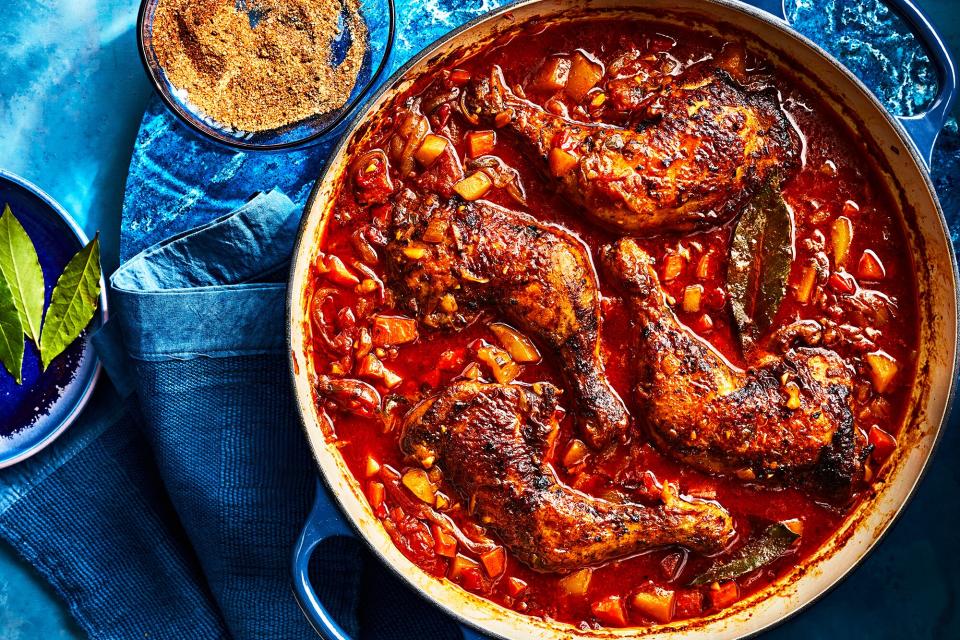
Photo by Greg Dupree / Food Styling by Chelsea Zimmer / Prop Styling by Claire Spollen
"The soup all abuelitas make their grandchildren, cooking a ojo, or by feel, has a million variations. I didn't have a Puerto Rican grandmother, so this version is a recreation of the flavors from the lechonerias, cuchifritos, lunch counters, restaurants, and street food vendors that nourish and restore the Bronx's massive Nuyorican population. The stew is a festival of comfort. At its base are the annatto and sofrito that define much of Puerto Rican cuisine, plus a touch of cumin and, because it's me who's making it, a bit of house spice to give just a hint of heat."
But by the time I entered culinary school, I had mentally cordoned off the food I loved from the food I wanted to make professionally. The fine-dining kitchen was a universe of clean cuts, fluorescent light, precise technique, luxury ingredients, and far-flung flavors, so foreign to my own experience that I was immediately enchanted. I wanted to be part of this well-heeled universe, and the fact that nobody looked like me and few looked like they liked me didn't get in the way. Nor did the fact that when I returned to the Bronx or to Harlem, feeble with exhaustion after a 14-hour shift, the food that gave me joy, let me know I was home, had nothing to do with the wizardry of downtown. I sustained myself on pollo asado, red beans and rice, egusi stew, Senegalese thiéboudienne, and chicken yassa.
At the Culinary Institute of America, my fellow students and I were put through the paces of French tradition. The techniques, the sauces, the ingredients, the language, the white hats, the clean toque, the "oui, chef"—all this formed a pyramid with France at the top. Like anyone learning a foreign language, I found the process exciting. And I learned how to form words, then sentences, and eventually stories with these techniques. But whose stories was I trying to tell?
Jamaican Callaloo
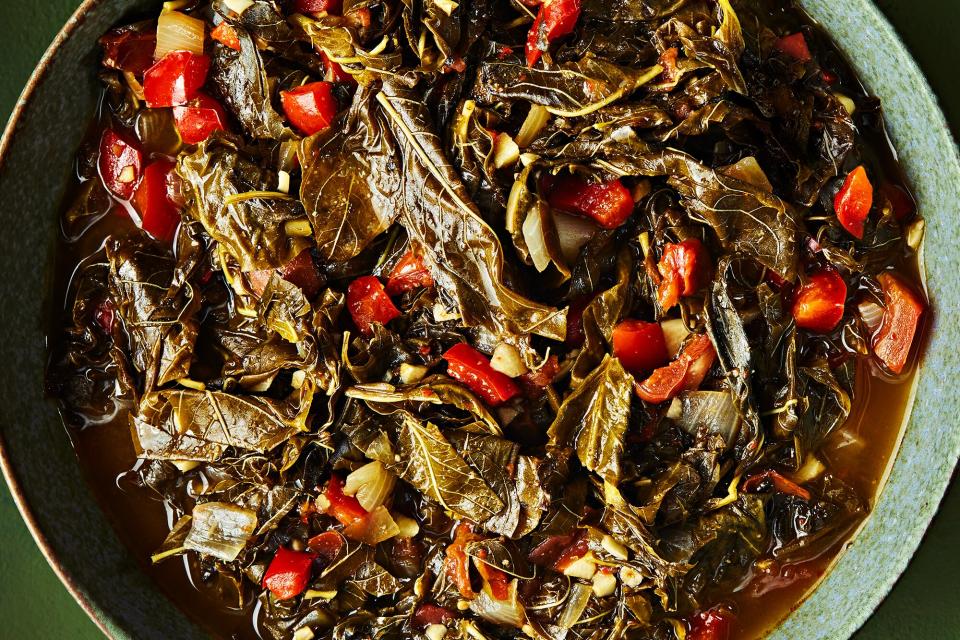
Photo by Greg Dupree / Food Styling by Chelsea Zimmer / Prop Styling by Claire Spollen
"What to call callaloo is a problem that has bedeviled Caribbean cooks forever. In Jamaica, the name refers both to the leafy greens of amaranth and the dish made from braising those leaves down in stock. The protein-rich leaves are cooked until tender and given spice and fulsome flavor with the addition of peppers and tomatoes." If you cannot find callaloo, use a blend of spinach and collards.
When I finally did open my own restaurant, a short-lived venture called the Shaw Bijou in Washington, D.C., I went to great lengths to tell my own story, expressed in true decadence. The halal chicken and rice I ate growing up became a rice chip with lamb sweetbread glazed in chicken jus. Jerk chicken became jerk duck prosciutto with a pistachio tuile. The menu nodded to my time in the Bronx, to my mother, to my dad, to my Jamaican aunties and Louisiana cousins. But although it was an autobiography, in hindsight, it was an autobiography written in a borrowed tongue.
At my second restaurant, Kith/Kin, also in D.C., I developed a menu made of what was familiar to me: the seafood gumbo and dirty rice of my mother and maternal grandmother; buljol and roti from my Trinidadian grandfather, Papa Winston; the suya and fufu I remember from Nigeria; the curried goat and brown stew chicken from my Jamaican grandma, Gloria, my dad's mom. And, of course, because the food of the Bronx is as much a part of me as all that, I saw a place on the menu, too, for rice and beans, pollo asado with a side of mojo, tostones, and maduros.
Curried Goat
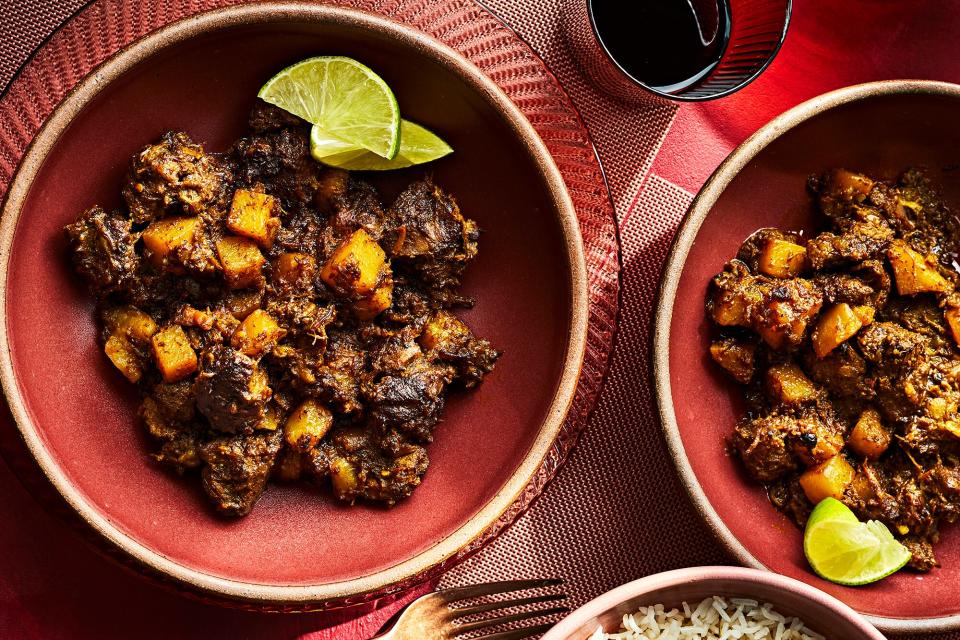
Photo by Greg Dupree / Food Styling by Chelsea Zimmer / Prop Styling by Claire Spollen
"Goat is at the center of many of Jamaica's best dishes, and the same can be said in Trinidad. This curried goat is actually a hybrid of the Trini and Jamaican versions I remember. I've used Jamaican curry powder along with Trinidad's heavily aromatic green seasoning."
Louisiana Red Beans and Rice
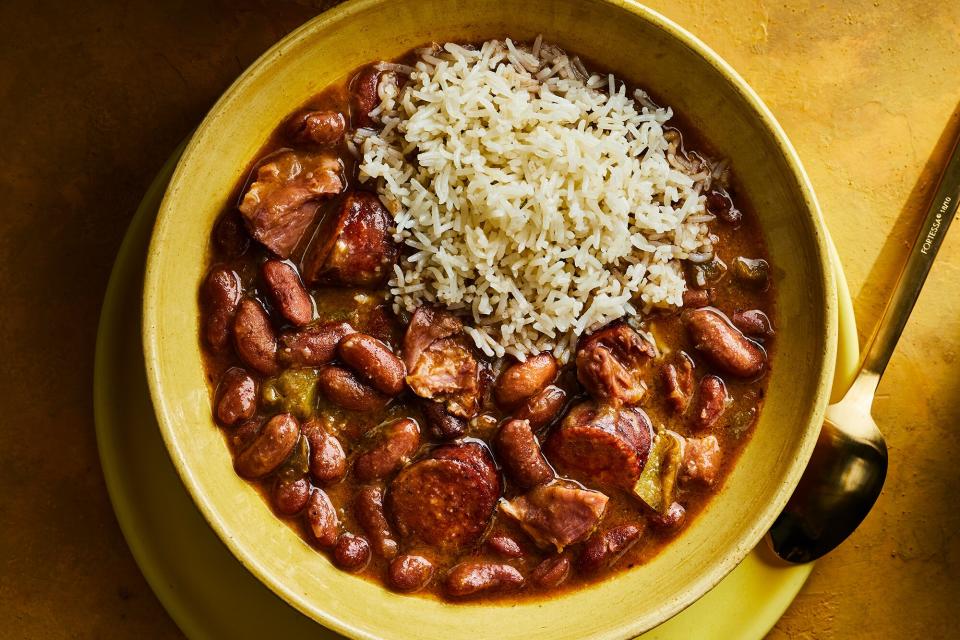
Photo by Greg Dupree / Food Styling by Chelsea Zimmer / Prop Styling by Claire Spollen
"Everyone with roots in southern Louisiana thinks that their mom makes the best version. But I'm the only one who's right. Growing up, my mom used this recipe as a base, adding in smoked turkey necks or smoked, spiced, and cured tasso ham, in addition to the ham hocks and andouille sausage that impart their smoke, fat, and spice to the Holy Trinity (celery, bell peppers, and onions) and, of course, the sturdy red kidney beans."
As I began to excavate deeper into my ancestral kitchen, a few things became clear. The first was that I didn't know nearly as much as I thought I did. Just because I had spent my entire life eating my mother's cooking, or my grandmother's, didn't mean I could cook it myself. This food, my food, I had always understood from the outside. Now, I learned it from the inside out.
The second realization came about as I began to see just how interconnected these diasporic cuisines are. They are not islands but part of the same river. I saw jollof and jambalaya as two traditions that fed Africans in vastly different circumstances. I heard the echoes of the one-pot stews of Nigeria in the one-pot stews of the American South. So much of diasporic cuisine—not just from the American South but from the Caribbean, too, as well as African cuisine itself—has been influenced by the slave trade. Rice, for instance, which West Africans excelled in cultivating, made them particularly attractive to human traffickers who needed skilled workers in the Lowcountry of South Carolina. One reason collard greens are so important is that they were one of the few ways enslaved Africans could feed themselves. Jerk was originally developed by Maroons—freed African slaves in Jamaica—to preserve meat without being detected and then captured and killed. These recipes represent survival.
Chin Chin
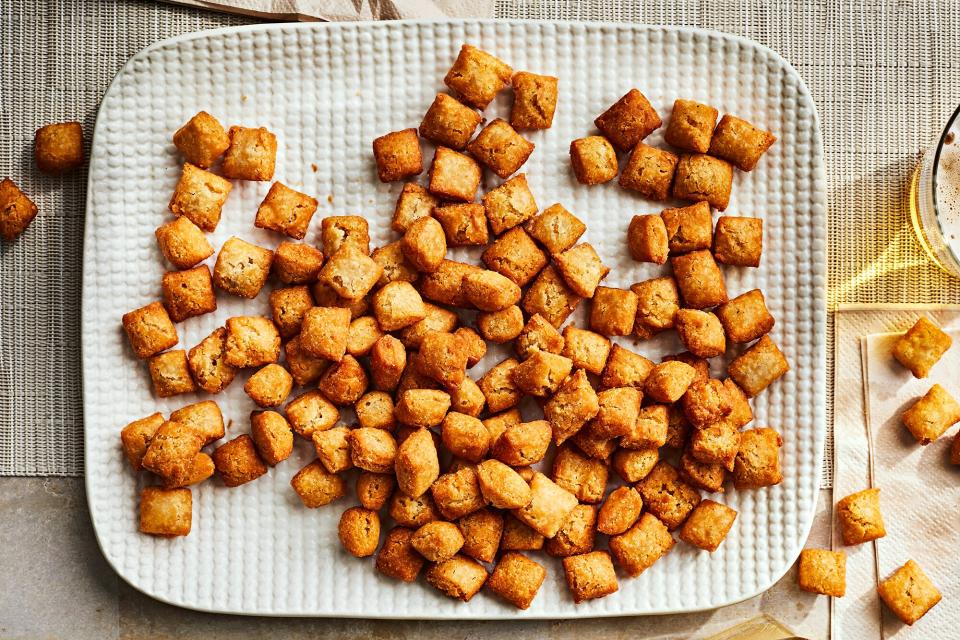
Photo by Greg Dupree / Food Styling by Chelsea Zimmer / Prop Styling by Claire Spollen
"The streets of Lagos Island are crowded with street vendors, including the chin chin stalls, generally run by women, which were nearly impossible to resist. Chin chin are nutmeg-riddled fried puffs of dough, the Nigerian contribution to filling mankind's desire for crunchy, sweet snacks. From behind their tables, the chin chin sellers sold not just these addictive cookies but a whole menagerie of fried foods, foods whose crunch does double duty by helping to maintain their longevity in the hot sun. But it was the chin chin I ordered, hastily, whenever I could."
My latest cookbook, My America, is an expression of the fact that I, too, am part of this diaspora. During the writing of it, I went back to places like Nigeria, the Caribbean, and the American South to enrich my memory with new experiences. The book is ancestral knowledge that I've married with my own unique personal experience and culinary know-how to show how brilliant the kitchens of my people are. The recipes I share here represent my America; they're a love letter to those who made it here, made me here. But they're also full of those whose names I never knew. My America is for my mom and her people, my dad and his. It's a land that belongs to you and yours and to me and mine.
Story and recipes from My America: Recipes from a Young Black Chef by Kwame Onwuachi and Joshua David Stein
Building Blocks of Flavor
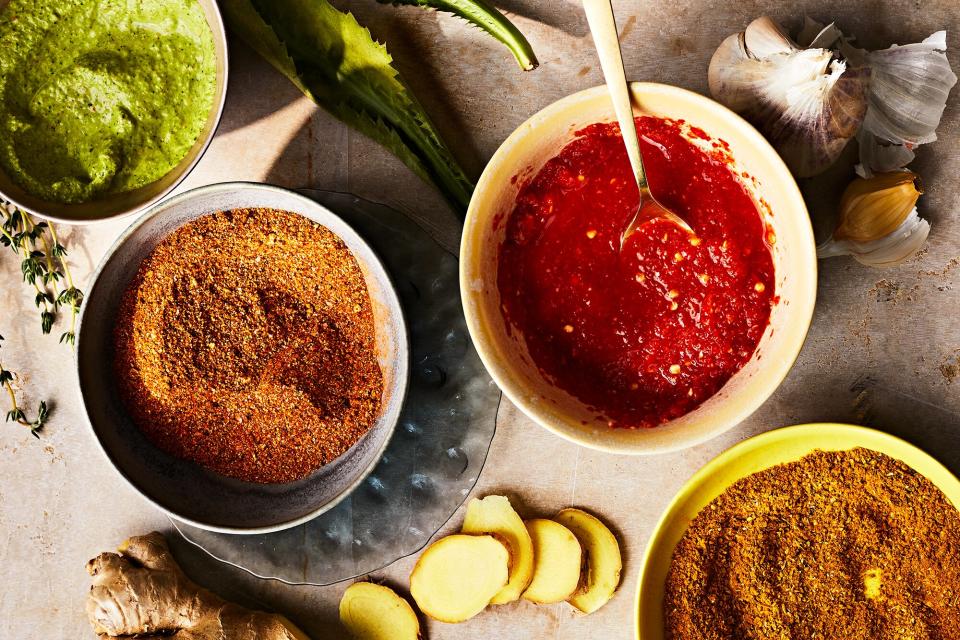
Photo by Greg Dupree / Food Styling by Chelsea Zimmer / Prop Styling by Claire Spollen
House Spice, Ginger-Garlic Purée, Curry Powder, Green Seasoning, and Peppa Sauce form a powerhouse pantry for Onwuachi, adding savory depth, refreshing piquancy, and a cooling herbal bite to any dish. Prepare these spice blends and sauces to stash in your own pantry, refrigerator, or freezer so you are ready to make Onwuachi's recipes.

